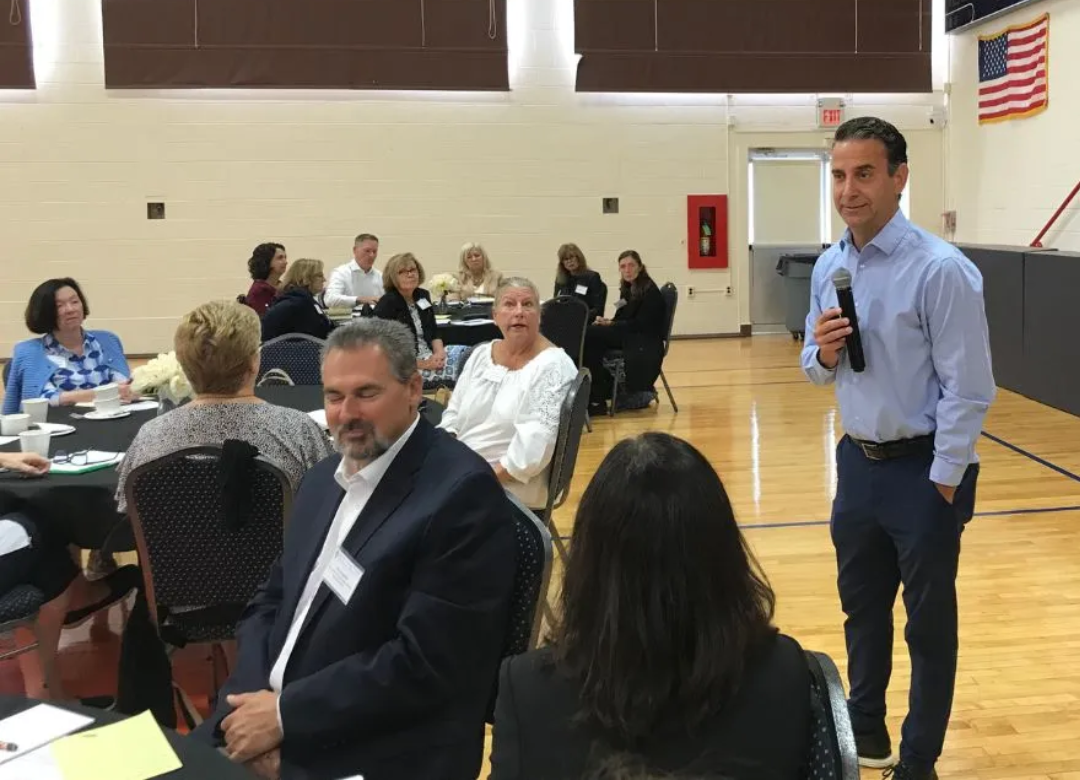Tech expert talks impact of social media on student mental health, what Catholics can do about it
Digital device overuse and dependence are permeating the classroom, causing a mental health crisis among today’s youth, a technology expert informed archdiocesan principals and administrators during the Archdiocese of Newark’s annual School Leaders Administrative Conference on Aug. 20.
Paul Sanfrancesco, a technical consultant with an extensive background at Catholic institutions, spoke to school leaders on the impact of social media on student mental health, offering a guide of sorts for addressing it. Catholic schools and their educators are equipped to help students navigate healthy smartphone and social media limits, preparing them for the future, Sanfrancesco said.
“We have an advantage in helping Catholics in this mental health crisis and in the formation of our kids,” Sanfrancesco added. “Parents are partnering with us to get kids ‘future ready.’”
Pros and cons
Sanfrancesco said the popular platforms Instagram, TikTok, and Snapchat use features and functionalities that attract young users through social validation and, therefore, considerably influence student behavior.
Some of that influence can be positive. According to Sanfrancesco, platforms can help teens stay connected to family and friends— especially those who live far away — express themselves, receive validation, explore trends, and even help with math problems.
According to the Pew Institute, 95% of teens own smartphones, and 90% are connected to some social media platform. However, those pros can enter the classroom and quickly become negatives. Leaders have reported battles over getting students to leave their devices at the classroom door to avoid distractions during lessons. Too much screen time also leads to sleep deprivation, which affects academic performance.
Time matters
Students spend seven hours in school and five hours on social media, according to a 2023 Gallup Poll.
Mental health experts say more screen time can lead to social media addiction and a potential decline in a teen’s mental health. According to a 2022 Pew Institute report, more than half of teens surveyed say it would be difficult for them to give up social media. About a third of teens say they spend too much time on social media, while 55% say they spend about the right amount of time on their devices.
According to the American College Health Association, of the 18–25-year-olds surveyed, anxiety increased by 134% from 2010 to 2021. Depression increased by 106% in the same period.
Sanfrancesco said more screen time also impacts socialization and self-sufficiency.
What can schools and parents do?
Sanfrancesco encouraged Catholic school leaders to take steps to mitigate the effects of reliance on digital devices and social media by implementing digital literacy programs and educating students about healthy social media habits. Integration of social media topics into classroom discussions and providing educators and parents with information to help them recognize signs of social media-related issues are additional steps that can be taken.
Policies on managing digital devices differ from school to school. Often, students are asked to leave their devices in pockets or baskets at the door or to place them face down on their desks.
Sanfrancesco recommended that teachers and administrators remain consistent with school rules. He also said home management, setting boundaries and guidelines for usage, and parental support of school rules are crucial to combatting too much screen time and addiction.
“Parents should be good examples and put down their phones to engage with others and their children…When picking up kids from school, don’t let them get on their phones until they get home. Have a conversation instead,” Sanfrancesco said. “Teachers should also set an example and never use their devices in the classroom.”
He said push notifications that consistently alert users to a new message or post should be turned off.
If online bullying occurs, Sanfrancesco said teachers, as well as other students, particularly student council members, can help combat it. He also suggested that schools educate students about healthy social media habits.
“If they see something, they should stop it and report it,” Sanfrancesco said. “If you are making fun of someone, you are breaking a commandment. It’s important that they realize there are consequences to hurting someone on the other side of the screen.”
Sanfrancesco has worked in Catholic, private, and public education and in collegiate teaching at Saint Joseph’s University and Neumann University for the past 24 years. The National School Boards Association named him one of the “20 to Watch Educators” for his work in instructional technology, and the Pennsylvania Association for Educational Communications and Technology named him “CTO of the Year” for the state of Pennsylvania in 2018. He presents at local, regional, and national convocations.
Featured image: Paul Sanfrancesco spoke to administrators and school leaders last week about the impacts of social and digital devices on mental health of students. (Jaimie Julia Winters)



